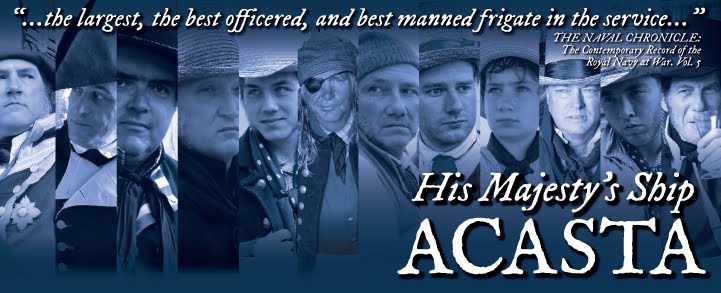 |
| Popham as a young Lt. |
The Admiral Popham Telegraph Signal book of 1806 is the book used on board Royal Navy ships, including the Acasta. Lord Nelson's final signal at Trafalgar was giv'n using the same system.
In way of explanation as to how to read the Popham Signals:
I. Preparatory flag consisting of a red-and-white diagonal flag which is flown at the start of a signal to show that it was a telegraphic signal.
II. The message finished flag consisted of blue and yellow diagonal.
III. If the message was understood the affirmative signal or a repeat of the signal that was sent.
IV. If the message was not understood then the affirmative signal with a white flag was flown.
V. If the message was to be answered a further flag was flown.
VI. If a number was to be sent then a numeral pennant was flown.
In way of explanation as to how to read the Popham Signals:
I. Preparatory flag consisting of a red-and-white diagonal flag which is flown at the start of a signal to show that it was a telegraphic signal.
II. The message finished flag consisted of blue and yellow diagonal.
III. If the message was understood the affirmative signal or a repeat of the signal that was sent.
IV. If the message was not understood then the affirmative signal with a white flag was flown.
V. If the message was to be answered a further flag was flown.
VI. If a number was to be sent then a numeral pennant was flown.
You may find a copy of Popham's Telegraph Signal book HERE. Have a look through it, it is a fairly simple system. You will need this as a reference from time-to-time when the Acasta hoists her signal flags.
Here is the previous signal hoisted, just before the Trafalgar Dinner, for practice:
Here is the previous signal hoisted, just before the Trafalgar Dinner, for practice:
 |
| Click on image to see a larger version. This message was hoisted after the capture of the Two Brothers to the Prize Crew from the Acasta |











































